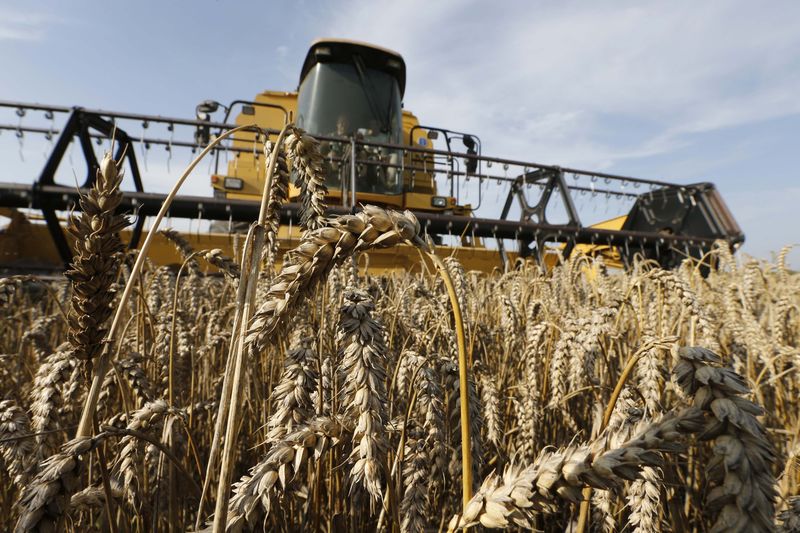* Australia's West, East hit by extreme dry weather
* Weather outlook remains dry through Sept -meteorologist
* Northern Hemisphere already grappling with crop shortfalls
By Colin Packham
SYDNEY, July 17 (Reuters) - Australian wheat production is on course to miss official forecasts by more than 20 percent as dry weather crimps yields in the world's fourth-largest exporter, exacerbating fears of tightening global supplies.
The expectation of Australia's shortfall follows news that one of the worst heat waves in decades is devastating wheat crops in southern Europe. Output in the United States is also tumbling due to hot, dry weather. concerns about dwindling global supplies have already pushed benchmark global prices Wv1 to a two-year high.
Australia's east and west coast regions - the country's largest wheat producing areas - have received less than half the average rainfall typical for the April 1 to June 30 quarter, data from the Australian Bureau of Meteorology (BOM) shows.
"It is probably too late in some areas for rain to make any difference, particularly in Western Australia. For the rest of the cropping belt, we are in desperate need of rain," said Matthew Pattison, trading manager at Nidera, the grains trader acquired this year by China's COFCO Group.
Due to the outlook for little soil moisture, traders and analysts are cutting expectations for Australia's wheat production by 20 percent below official estimates.
"The market is beginning to factor in a crop of between 19 million to 21 million tonnes," Pattison said.
That compares with Australia's chief commodity forecaster in June pegging wheat output at 24.1 million tonnes. latest estimate is for 23 million tonnes but on the big caveat that it rains immediately," said Phin Ziebell, agribusiness economist, National Australia Bank. "If it doesn't rain, it could easily be 18 million tonnes."
Australia's wheat production woes threaten to follow a similar path to some of the world's largest producers.
Extremely dry weather in the Northern Hemisphere this year - including in the major agricultural producing regions of China, Russia, western Europe and North America - looks like it will end years of healthy and in many cases record production levels. Reuters meteorologist Georg Mueller expects dry weather to continue across Australia's key producing regions through the critical yield-determining phase in September.
"It has been the least rainfall we have ever received, and even if we get a break, I would say yields are going to be down 50 percent on average levels," said John Snooke, a grain farmer in Cunderdin, 158 kilometres (98.1 miles) west of Perth in Western Australia.
Lower output from Western Australia threatens the country's export prospects. Australia's government expects wheat exports to hit 20.9 million tonnes, the bulk of which is expected to come from Western Australian producers.
Should Australian exporters have less wheat to ship, Indonesian and South Korean millers will be forced to turn to supplies from the Black Sea, where production has been aggressively expanded.
Australia has steadily lost market share in recent years to Ukraine and Russian exporters, and analysts fear there could be a permanent shift away from the world's No. 4 exporter.
<^^^^^^^^^^^^^^^^^^^^^^^^^^^^^^^^^^^^^^^^^^^^^^^^^^^^^^^^^^^ World's top wheat exporters
http://reut.rs/2tZXQqs It is unusually dry in Western Australia
http://reut.rs/2tZVckx
^^^^^^^^^^^^^^^^^^^^^^^^^^^^^^^^^^^^^^^^^^^^^^^^^^^^^^^^^^^>
